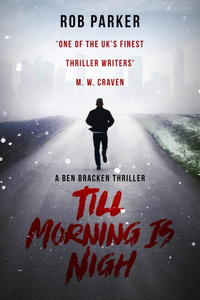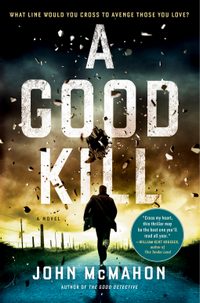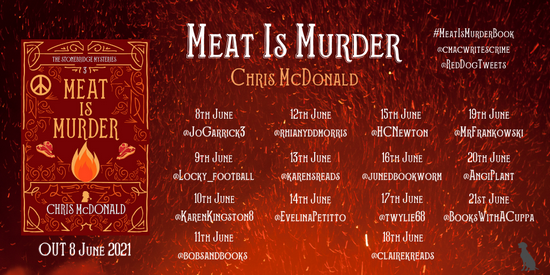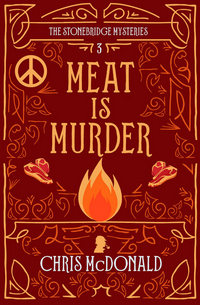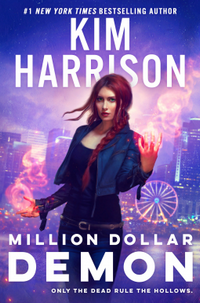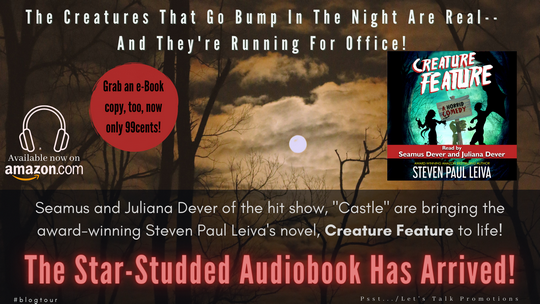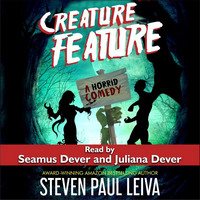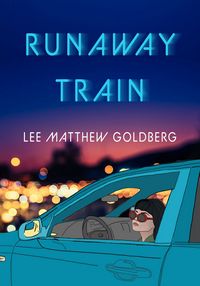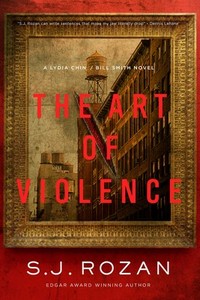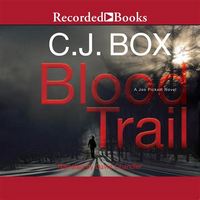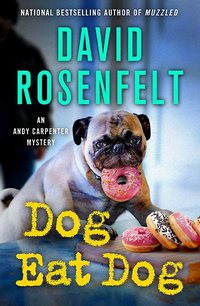 |
Dog Eat Dogby David Rosenfelt eARC, 304 pg. Read: June 24, 2021 |

What’s Dog Eat Dog About?
Coming home from a walk, Andy and Laurie see a man abusing his dog across the street. Before they can intervene someone else jumps in to defend the dog (and it’s probably good for the abuser that it happens before Laurie can get her hands on him). Both the man who protected the dog and the man who attacked it are arrested—but the way the defender reacts, Andy’s sure it’s about more than just the assault.
It turns out that this man, Matthew Jantzen, had used one of those online genetic tracing sites to try to find out if his father had left other kids when he died (Jantzen is pretty sure he did). This allows him to track down a half-sister and to put his DNA in a place where law enforcement can see it and compare that DNA to what was found at the scene of a murder. Jantzen knew it was coming (the police had visited his sister about the time of the murder a few years ago), but had hoped to avoid having to deal with it.
Andy just can’t figure out why someone who was wanted by the police would expose himself the way Jantzen did when he protected the pug. So he has to learn more about Jantzen. Then he finds himself going to the town in Maine where the killing took place to help secure legal counsel on Jantzen’s behalf. One thing leads to another, and Andy ends up in court defending Jantzen.
Little by little, Andy’s team comes to join him in Maine, investigating the things the police were supposed to take care of. They find themselves looking into a mess of drugs, racist militias, and hard-to-explain DNA evidence.
How Did Rosenfelt Make It This Long?
Given the number of Dog-themed and Dog-Pun-Filled titles in this series, how has he not used Dog Eat Dog until book 23? Even if you subtract the holiday-themed titles, it’s still nineteen novels without using it. You have to admire the restraint he’s shown up to now.
Stranger in a Strange Land
Unless I’m forgetting something, this is the second time that Andy’s taken on an out-of-state client (the last time was in 2007’s Dead Center, the fifth book in the series). When he arrives in Maine he learns three things quickly: the people are friends and welcoming, the lobster rolls in Maine are a wonderful thing; just about everyone is convinced Jantzen did it, no matter what the big-shot New York lawyer says (he seems incapable of convincing anyone he’s from New Jersey).
Andy has to employ a local lawyer for the purposes of the trial and hires a criminal defense attorney Charlie Tilton. Tilton has no desire whatsoever to take on Jantzen’s case himself—but is perfectly content to take Andy’s money to help out. He ends up taking on the role of Eddie Dowd, Kevin Randall, or Hike Lynch—he does the paperwork, legal research, and so on while Andy investigates, annoys the judge, and needles the prosecution. Charlie’s pretty normal compared to the rest, maybe a little more mercenary than the others, but that’s about it. It was a refreshing change (but I’m ready to see Eddie Dowd again).
It’s nice seeing Andy in a new setting, unable to rely on his media and police contacts, etc.
So, what did I think about Dog Eat Dog?
This is the second David Rosenfelt book I’ve read in 2021—there’s one more to go (The holiday-themed novel). How he’s able to write three solidly entertaining, frequently humourous, complex mystery novels in a year is mind-boggling. Once again, I thought I knew where Rosenfelt was going with the case and was ready for it—and then Rosenfelt pulled a rabbit out of his hat and I was caught unprepared a couple of times to see where he went.
I loved some of the recurring jokes in this-both those exclusive to this novel and some that are ongoing over the years.
There are series out there that ebb and flow in terms of quality—I don’t think these books have done that—truly impressive at the 23rd book. You know what you’re going to get when you crack open a David Rosenfelt book—and I’m so glad he continues to deliver.
Solid courtroom action, some good out-of-court detection, plenty of fun with characters old and new—particularly with Andy’s narration. These can be read as stand-alones or as part of a series. Either way you go—you’ll be happy you tried this.
Disclaimer: I received this eARC from St. Martin’s Press via NetGalley in exchange for this post—thanks to both for this.

This post contains an affiliate link. If you purchase from it, I will get a small commission at no additional cost to you. As always, opinions are my own.
![]()


